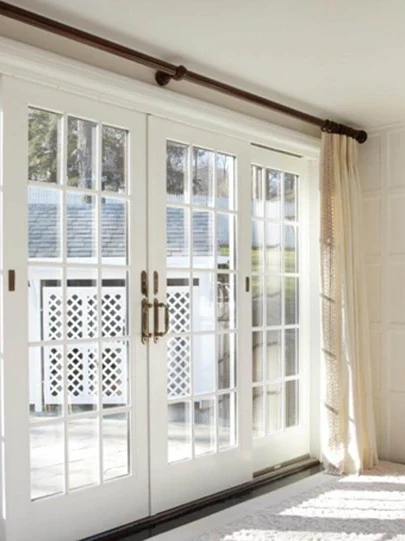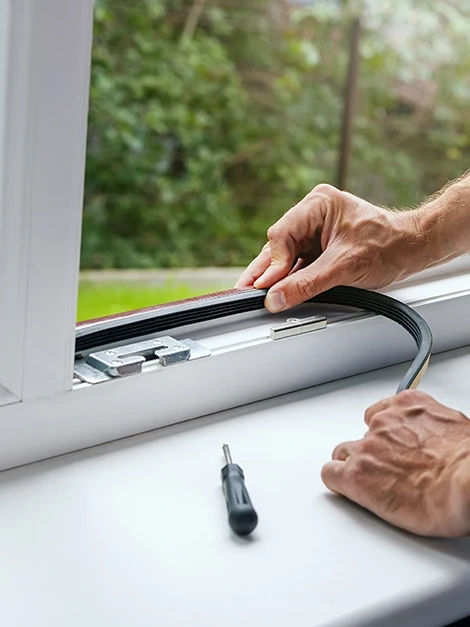When it comes to enhancing the energy efficiency of buildings, the U-value of windows plays a pivotal role. This metric is crucial for architects, builders, and homeowners alike, as it directly impacts the thermal performance and sustainability of a structure. The U-value measures how well a window can prevent heat from escaping, making it a key factor in building regulations and energy-saving strategies.
Considering replacement windows?
Key Takeaways
- U-value is essential for measuring a window’s insulation effectiveness.
- Building regulations strictly dictate the U-value for new and renovated structures to ensure energy efficiency.
- Selecting windows with optimal U-value can significantly reduce energy consumption and costs.
Introduction to U-Value
The U-value, or thermal transmittance, quantifies the rate of heat transfer through a window. Lower U-values indicate better insulation properties, contributing to a building’s overall energy efficiency. This measure is not only a benchmark for product selection but also a compliance requirement in building codes, emphasising its importance in construction and renovation projects.

The Science Behind U-Value
Understanding how U-value is measured provides insights into its impact on a building’s thermal performance. The calculation considers various factors, including the type of glazing, the gas used between panes, and the frame material. These elements work together to minimise heat loss, making the selection of windows a critical decision in the design phase.
Factors Affecting U-Value in Windows
- Type of Glazing: Double or triple glazing can significantly lower U-values.
- Gas Fill: Argon, krypton, or xenon gas fills between panes reduce heat transfer.
- Frame Material: Materials like uPVC, wood, or composite have different insulation properties.
U-Value in Building Regulations
Building regulations have set stringent standards for U-values to ensure that new constructions and renovations meet energy efficiency requirements. These standards vary, but the goal remains the same: to reduce energy consumption and promote sustainability.
Overview of Building Regulations Related to U-Value
Building codes specify maximum U-values for different parts of a building, including windows, which are often more stringent than for other components. Compliance with these regulations is mandatory, influencing the choice of windows in both residential and commercial projects.
Differences in Regulations by Region
While this article does not specify countries, it’s important to note that regulations can vary significantly. Builders and designers must be familiar with local codes to ensure compliance and optimise the building’s energy performance.

Selecting Windows with Optimal U-Value
Choosing the right windows is crucial for meeting building regulations and achieving energy efficiency. Here are some tips for selecting windows with the best U-value:
- Prioritise Low U-Value: Look for windows with the lowest possible U-value within your budget.
- Consider the Whole Window: Evaluate both the glazing and frame materials as they contribute to the overall U-value.
- Balance Cost and Performance: While higher-performing windows may be more expensive, they can offer greater energy savings over time.
Impact on Energy Efficiency and Sustainability
Windows with optimal U-value contribute significantly to a building’s energy efficiency, reducing the need for heating and cooling. This not only lowers energy costs but also reduces the carbon footprint of the building, making it a key consideration in sustainable design.
Table 1: Comparison of Window U-Values and Their Impact on Energy Efficiency
| Window Type | U-Value (W/(m²K)) | Estimated Energy Savings |
| Single Glazed | 5.0 | Low |
| Double Glazed, Air Filled | 2.8 | Moderate |
| Double Glazed, Argon Filled | 1.4 | High |
| Triple Glazed, Argon-Filled | 0.8 | Very High |
This table illustrates the significant impact that selecting the right type of window can have on a building’s energy efficiency. By choosing windows with lower U-values, builders and homeowners can achieve substantial energy savings and contribute to environmental sustainability.
Selecting Windows with Optimal U-Value
Choosing windows that offer the best thermal performance involves more than just picking the right product; it requires an approach that considers the entire window assembly, including frames, glazing, and additional features like low-E coatings or gas fills. Here are some practical tips for making informed decisions:
- Evaluate Energy Performance Ratings: Look for windows that have been rated for their energy performance, considering factors such as the U-value, solar heat gain coefficient (SHGC), and air leakage.
- Consult with Professionals: Engage with architects or energy consultants who can provide expert advice tailored to your specific project needs.
- Consider the Building’s Orientation and Climate: The optimal U-value for windows can vary depending on the building’s location, orientation, and local climate conditions.

Impact on Energy Efficiency and Sustainability
Implementing windows with optimal U-values is a strategic investment in the building’s energy efficiency. These windows reduce the demand for artificial heating and cooling, leading to lower energy bills and a smaller carbon footprint. Moreover, they contribute to a more comfortable indoor environment by maintaining consistent temperatures and reducing drafts.
Table 2: Benefits of Low U-Value Windows by Climate
| Climate Type | Benefits |
| Cold | Reduces heat loss, lowers heating costs |
| Temperate | Balances heat loss and gain, optimises energy use |
| Hot | Minimises unwanted heat gain, reduces cooling needs |
This table underscores the importance of selecting windows with appropriate U-values tailored to the specific climate, maximising energy efficiency and comfort.
FAQs on U-Value and Building Regulations
The maximum allowable U-value for windows varies depending on local building regulations. Generally, lower U-values are required to meet energy efficiency standards, with many regions setting a maximum U-value between 1.2 and 1.6 W/(m²K) for new constructions.
U-value requirements are often adjusted based on the local climate to optimise energy efficiency. In colder climates, lower U-values are preferred to reduce heat loss, while in warmer climates, the focus may also include controlling solar heat gain.
Yes, older windows can be upgraded to improve their U-value through various methods, such as adding secondary glazing, replacing the glass with low-E or gas-filled units, or installing entirely new, high-performance windows.







